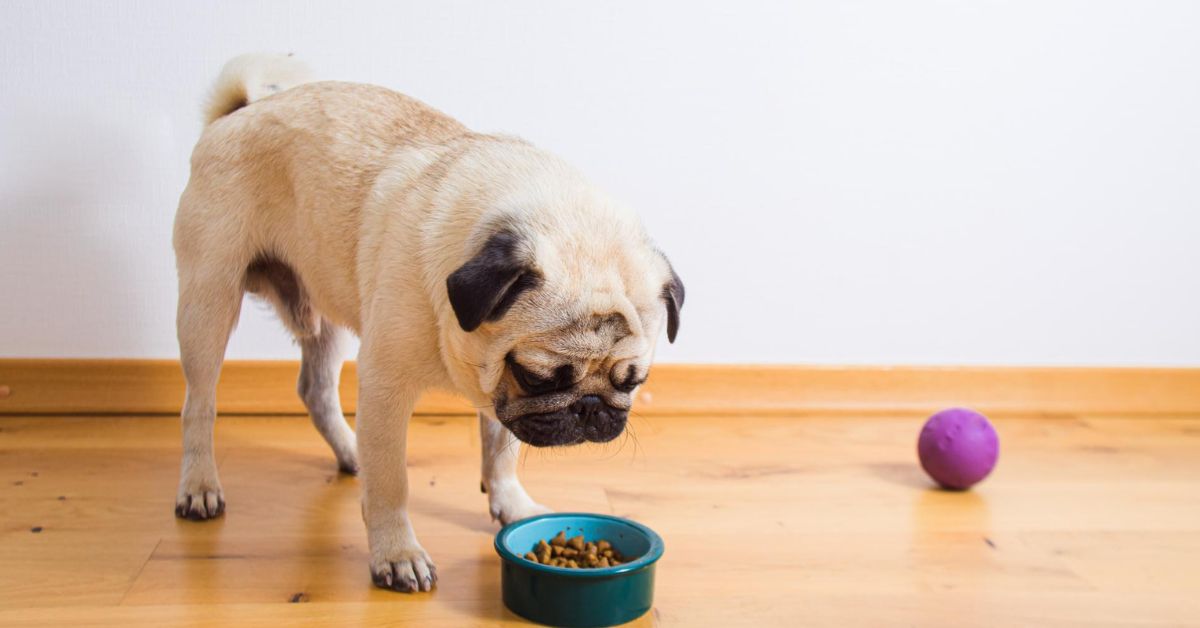Any pet dog owner must know how long a dog can go without eating. While missing meals might not be alarming, prolonged periods without food can indicate underlying health problems. As with humans, dogs can experience changes in appetite due to illness, changes in environment, or psychological stress.
It’s essential to understand why your dog won’t eat and to know when to seek veterinary advice. Here, we’ll talk about what dogs eat, the causes of a loss of appetite, and what you should do if your dog stops eating.
Regular Eating Habits of Dogs
Like humans, dogs have different eating habits based on factors like age, breed, size, and activity level. On average, adult dogs should eat once or twice a day. Due to their rapid growth and high energy needs, puppies usually need three to four meals a day.
Dogs also require different amounts of food. In contrast, smaller or less active dogs may need fewer calories. Follow your dog’s breed and size feeding guidelines, and adjust according to their activity level and health.
Understanding your dog’s normal eating habits is crucial. Regular feeding routines help control blood sugar, prevent obesity, and ensure your dog gets all the nutrients it needs.
Reasons Dogs Might Stop Eating
The sudden change in your dog’s eating habits may have several causes. Understanding these possible causes can help you address the issue more effectively.
Health-Related Issues
There are a number of health-related reasons why dogs stop eating. Infections, digestive problems, or chronic diseases such as diabetes and kidney failure can cause the loss of appetite.
Dogs with dental problems, such as broken teeth, gum disease, or oral infections, have a hard time chewing. Gastritis, pancreatitis, and intestinal blockages can also make dogs uncomfortable and make them not want to eat.
Environmental Factors
The environment in which a dog lives can significantly impact its eating habits. Changes in schedule, travel, or moving to a new house can affect a dog’s appetite.
Loud noises, separation anxiety, and unfamiliar people or animals can make dogs anxious and make them less likely to eat. Maintaining your dog’s regular eating routine requires recognizing and minimizing these environmental stressors.
Dietary Issues
Dietary factors can also contribute to a dog’s refusal to eat. It is possible for dogs to be picky eaters and refuse food they do not like or have changed in taste. Having food allergies or intolerances can also make your dog less interested in food.
Plus, dogs have a keen sense of smell, so they’ll turn down food that smells bad. This helps to keep the food fresh and appealing.
Psychological Factors
Psychological factors like anxiety and depression can affect a dog’s appetite. Changes in the house, new pets, or separation from their owners can cause stress and make people eat less.
Depression can also cause dogs to lose interest in activities they used to enjoy, like eating. Identifying and addressing the psychological factors that influence your dog’s eating habits and well-being can be beneficial.
Can a Dog Go Longer Without Food Than Without Water?
When considering a dog’s well-being, it’s crucial to understand the limits of their survival. Generally, a dog can go weeks without food, but only a few days without water. The specifics of these timelines make the topic of dog hydration duration explained vital for pet owners to ensure proper care and health.
How Long Can a Dog Go Without Eating?

It’s essential to know how long a dog can go without eating before you go to the vet. In general, healthy adult dogs can go without food for about three to five days, but it depends on a lot of things.
The situation is more urgent for puppies. Because puppies are more miniature and need more energy, they can only go without food for 12 to 24 hours before they get sick. Dogs with preexisting health conditions and seniors have a lower tolerance for fasting and may show adverse effects faster.
Despite the fact that a healthy adult dog can survive a few days without food, water intake is much more critical. Dehydration can occur in dogs within 24 hours, particularly in hot weather or if they are very active. Fresh water should always be available to your dog.
Monitoring for warning signs is essential. Symptoms like lethargy, vomiting, diarrhea, or noticeable weight loss indicate your dog’s refusal to eat is becoming dangerous and needs immediate medical attention. In addition, note any other behavioral changes or signs of discomfort that may accompany the loss of appetite.
Dogs can survive for a short time without food, but prolonged fasting can cause serious health problems. If your dog won’t eat for more than a day or two, ask your vet, especially if they’re puppies, seniors, or have health problems.
What to Do If Your Dog Stops Eating
If your dog stops eating, it’s essential to take proactive steps to identify and address the issue. Here’s a guide on what to do if your dog refuses to eat:
Observe Behavior
Begin by closely observing your dog’s behavior. Look for signs of illness, such as lethargy, vomiting, diarrhea, or any unusual physical symptoms. Note any changes in their daily routine or environment that could be causing stress or anxiety.
Check the Food
Ensure that the food you’re offering is fresh and appealing. Dogs have a keen sense of smell, and they may refuse food that has gone bad or has an off odor. Try offering a different type of food or a favorite treat to see if your dog shows interest.
Offer Smaller Meals
Sometimes, offering smaller, more frequent meals can encourage your dog to eat. This approach can be particularly practical if your dog is experiencing digestive issues or is recovering from an illness.
Create a Comfortable Eating Environment
Make sure your dog has a quiet, comfortable place to eat. Minimize distractions and stressors that could be affecting their appetite. Providing a calm environment can help your dog feel more at ease and more likely to eat.
Hand-Feed Your Dog
In some cases, hand-feeding can stimulate your dog’s appetite. Gently offer small pieces of food by hand to encourage them to eat. It can also help you assess if there are any physical issues, such as dental pain, that may be causing the refusal to eat.
Consult a Veterinarian
If your dog refuses food for more than a day or two, it’s crucial to consult a veterinarian. Prolonged loss of appetite can lead to serious health issues, and a vet can help diagnose and treat any underlying conditions. Be prepared to provide detailed information about your dog’s behavior, diet, and any recent changes in its environment.
Potential Treatments and Solutions
Depending on the cause of your dog’s lack of appetite, a veterinarian may recommend various treatments or solutions. It could include dietary changes, medication for underlying health issues, or behavioral interventions to reduce stress and anxiety.
Read More: Can Dogs Eat Tortillas?
Conclusion
Knowing why your dog won’t eat and how long it can go without food is crucial for its well-being. It’s essential to monitor its behavior, ensure a stress-free environment, and seek veterinary advice when necessary. Remember to take care of your dog’s health and keep its appetite up. Don’t hesitate to see a vet if you have concerns.




